The two questions we hear most often from home gardeners are “what grows in the shade?” and “what won’t deer eat?” There is a great answer to both questions: ferns!
We have an amazing variety of native ferns in the northern US. There are ferns for wet or dry shady areas, ferns that grow tall and ferns that stay short, ferns that form tidy well-behaved clumps, and ferns that run wild, filling in large areas for groundcover or erosion control. Some ferns are happy in deep shade, and others like more sun than you might expect. Ferns can be dramatic accents in the garden, or create soothing, naturalistic vistas. And all of them are ignored by deer, rabbits, and woodchucks.
Ferns are ancient. Fossils more than 220 million years old have been found of the very same fern species that grow in our forests and gardens today. Apparently, dinosaurs didn’t eat ferns either! Here are a few of our favorite ferns for home gardens:
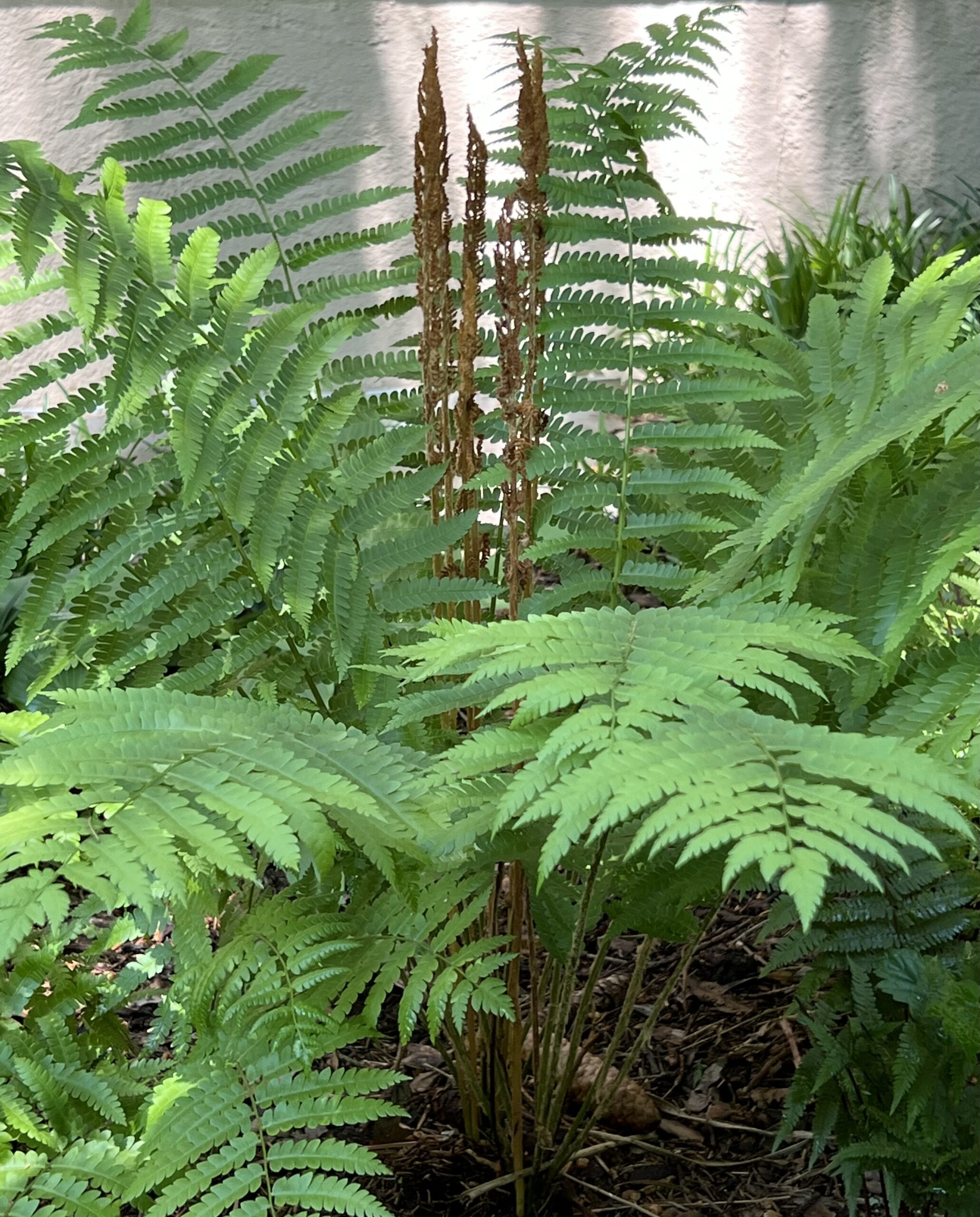
For drama, use Cinnamon Fern (Osmunda cinnamomea). Named for the tall cinnamon-colored stalk that rises out of its center, Cinnamon Fern can be a focal point in the garden. It grows 3 to 5 feet tall, with lush fronds extending just as wide, and almost has the tropical look of a palm. It does well in shade, but as long as the ground is damp, it will get even bigger with more sun. In early spring, it looks positively alien as it emerges from the ground covered with fuzzy hairs that disappear as the fronds unfurl. In the fall, Cinnamon Fern turns bright yellow before going dormant for the winter.
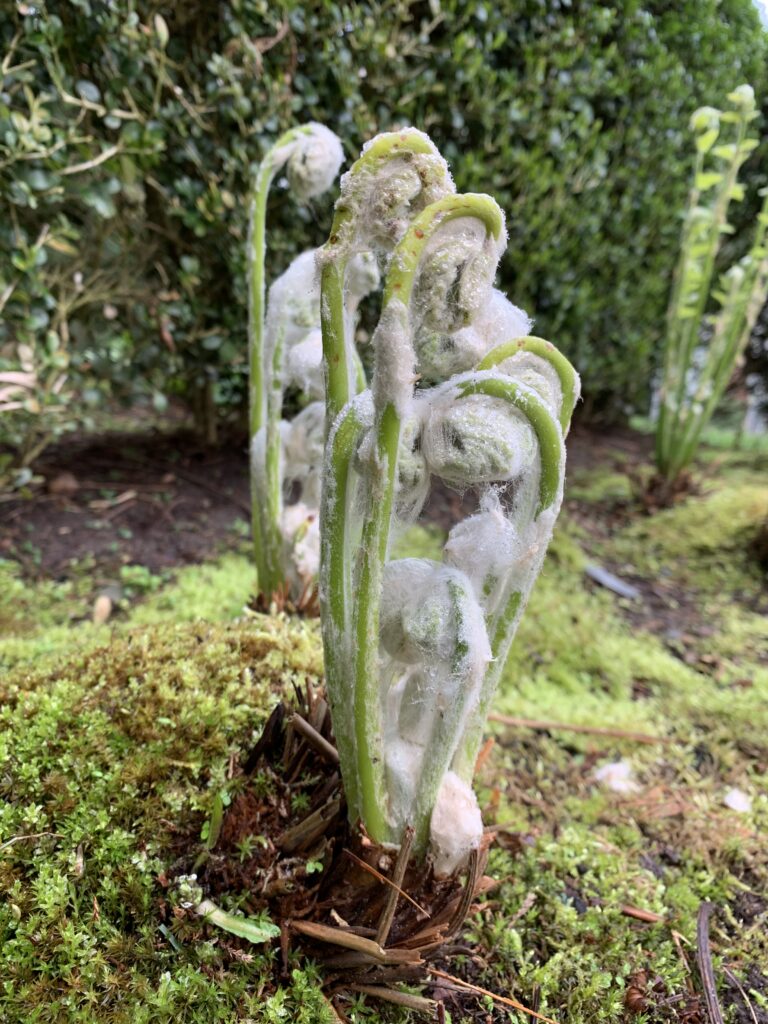
For a front-of-the-border charmer, use Lady Fern (Athyrium filix-femina). Forming well-behaved clumps with an airy grace, Lady Fern does well in part-shade and even moisture. A cultivar called “Lady-in-Red” has deep red stems that contrast with its fresh green fronds. It will grow 2 to 3 feet tall and wide, and will stay politely where you put it.
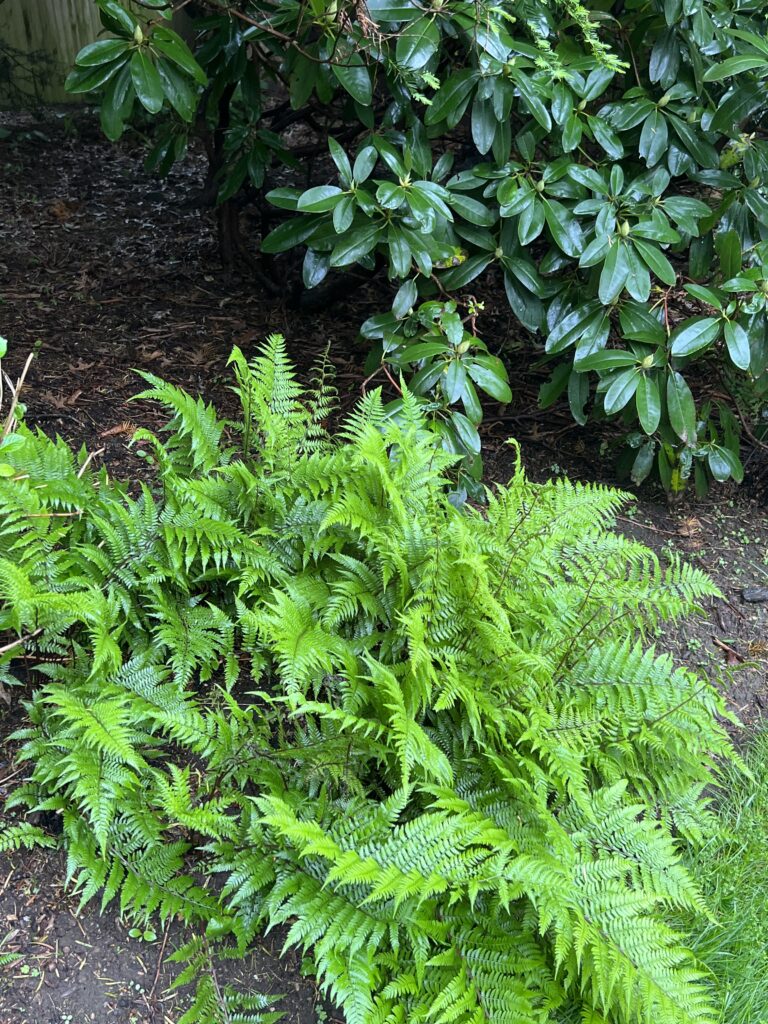
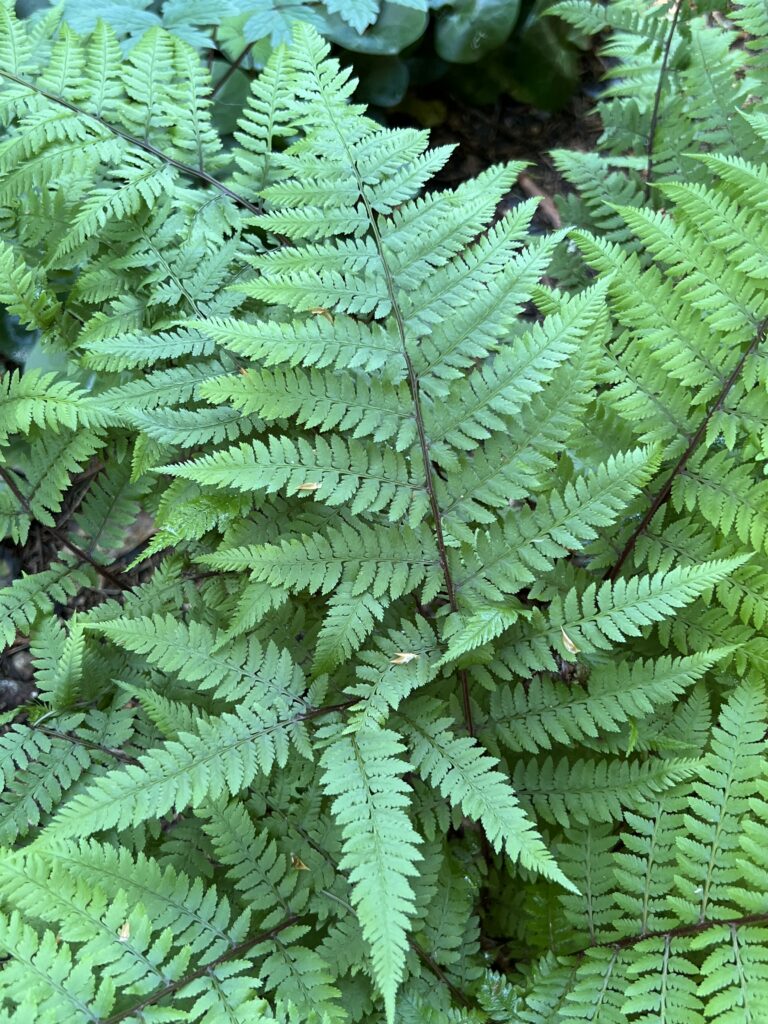
If you want to cover a lot of terrain, and collect a bonus edible veggie, Ostrich Fern (Matteuccia struthiopteris var. pensylvanica) is the way to go. With adequate moisture, Ostrich Fern will grow 3 to 5 feet tall in shade or sun, and spread itself aggressively. It grows in defined clumps, but sends out runners that form new clumps in time. It can be controlled easily enough by severing the runners and digging out the new plants — or by eating them! Fiddlehead ferns are delicious. They should be harvested in early spring when the ferns are just emerging from the ground and getting ready to unfurl. Cut the emerging fiddleheads with a bit of the green stem. Wash them and peel off any papery covering. They are great steamed, or sauteed in a little butter with salt, pepper, and a bit of garlic.
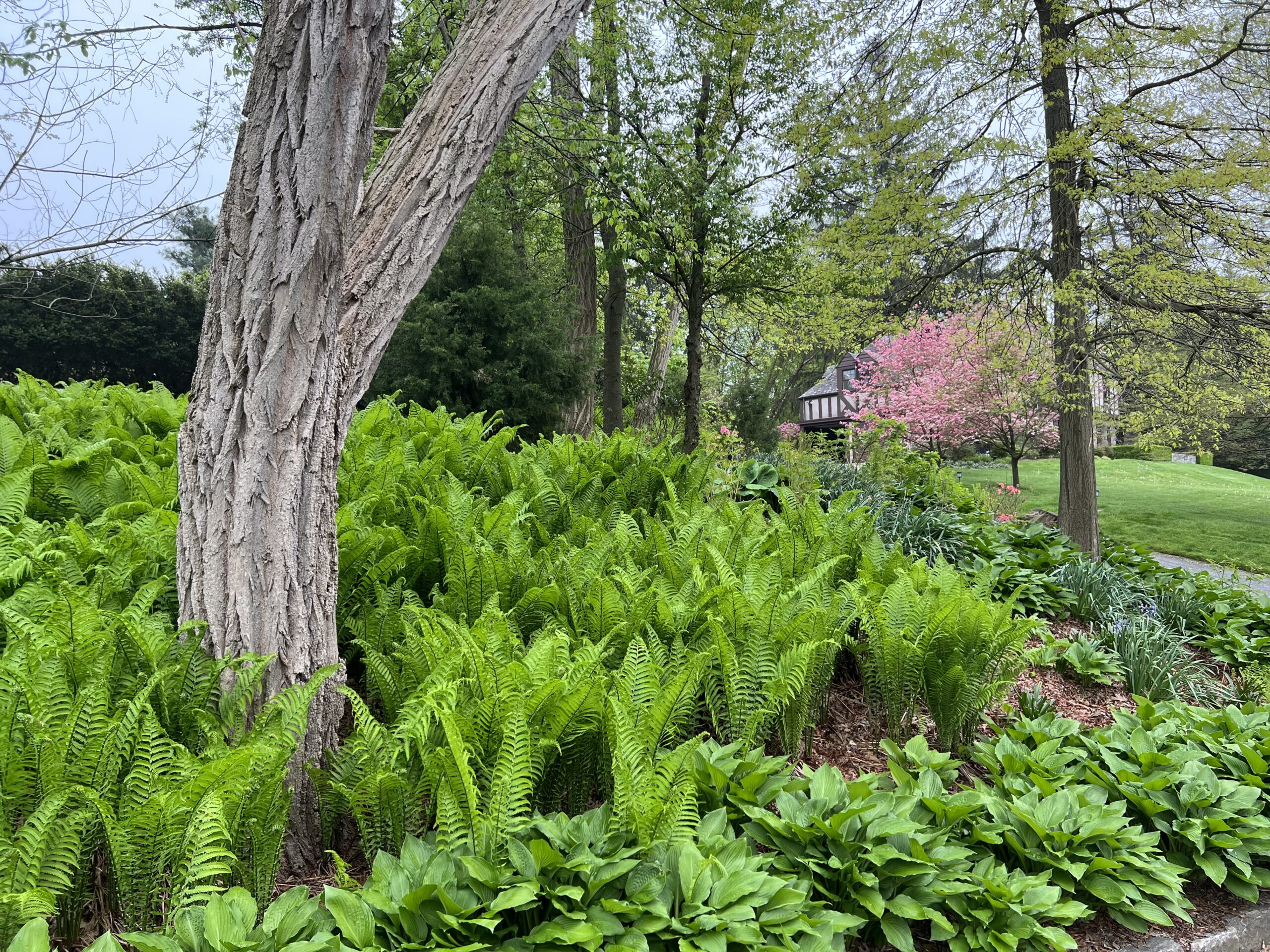
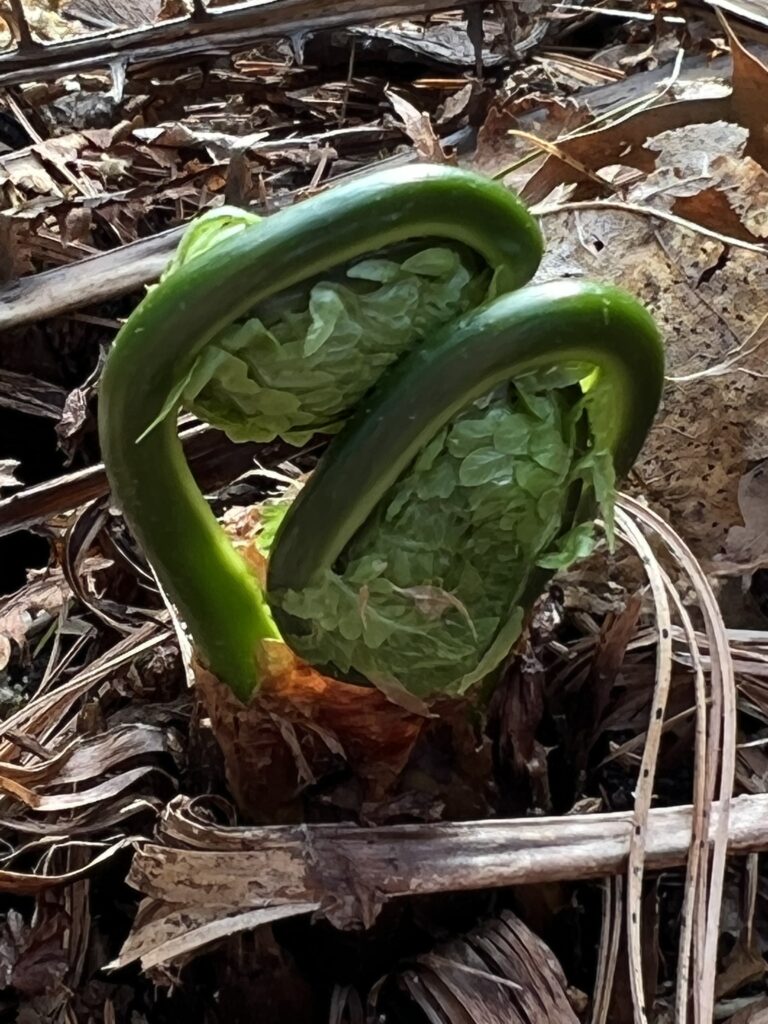
Another garden favorite is Maidenhair Fern (Adiantum pedatum). The unusual circular fronds sit on top of a slender stem (petiole), about 18 inches tall, with fluffy “feathers” arranged around the circle. They are much tougher than they look and combine well with other shade plants. In rich, moist soil, they can take quite a bit of sun without wilting. Their lacy texture is beautiful contrasting with broad-leaf plants like Wild Ginger, Coral Bells, or Rhododendron.
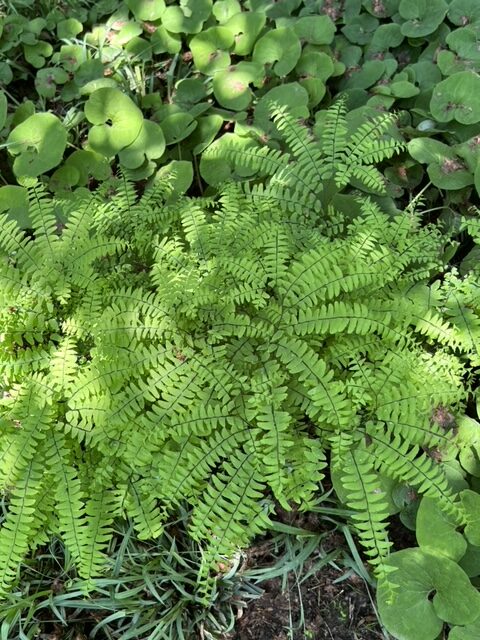
One of the most ancient ferns is also one of the most interesting. Interrupted Fern (Osmunda claytoniana) sends up stalks with fresh green leaves, then appears to change its mind as the stalk develops curly brown “flowers” in the middle, then changes its mind again and continues with green. These “interrupted” stalks are the fertile spore-bearing part of the fern. Once the spores mature and drop, the fronds arch gracefully, up to 4 feet high, for the rest of the summer. Clumps of Interrupted Fern will expand very slowly over the years providing a strong architectural feature to the garden.
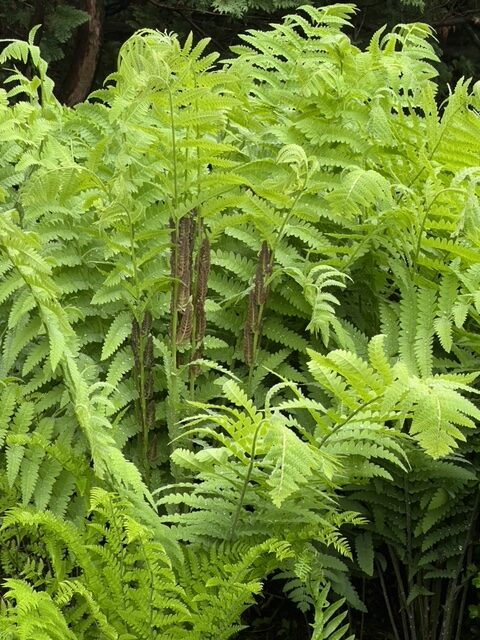
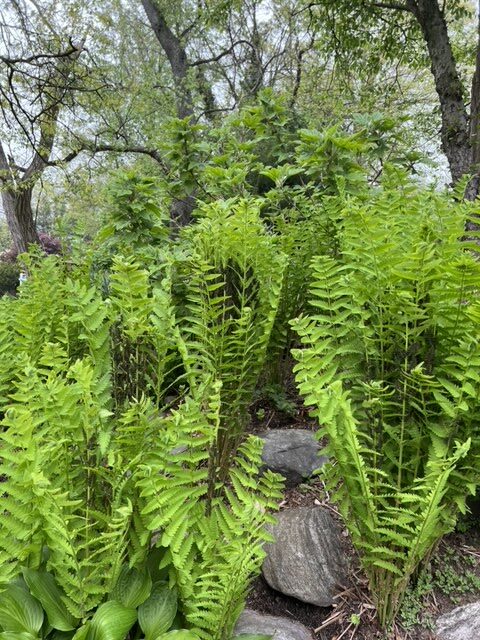
Christmas Fern (Polystichum acrostichoides) has the great virtue of being evergreen. It does well in dry shade, and needs no care at all. You can find it easily while walking in northern woods in the winter time, and it makes a great evergreen groundcover under trees and shrubs in the home garden. It stays low, under 2 feet typically, and spreads only very slowly. But if planted densely, it makes an attractive year-round groundcover.

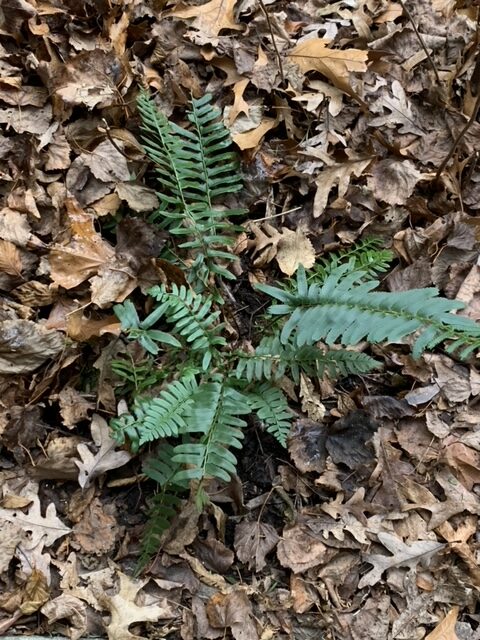
All of these native ferns are hardy to Zone 3 and need very little care. They are woodland plants, so they like soil naturally enriched with fallen leaves and decayed plant matter. Try a few in those troublesome, shady and deer-browsed spots. Or plant a whole fern garden and try them all!
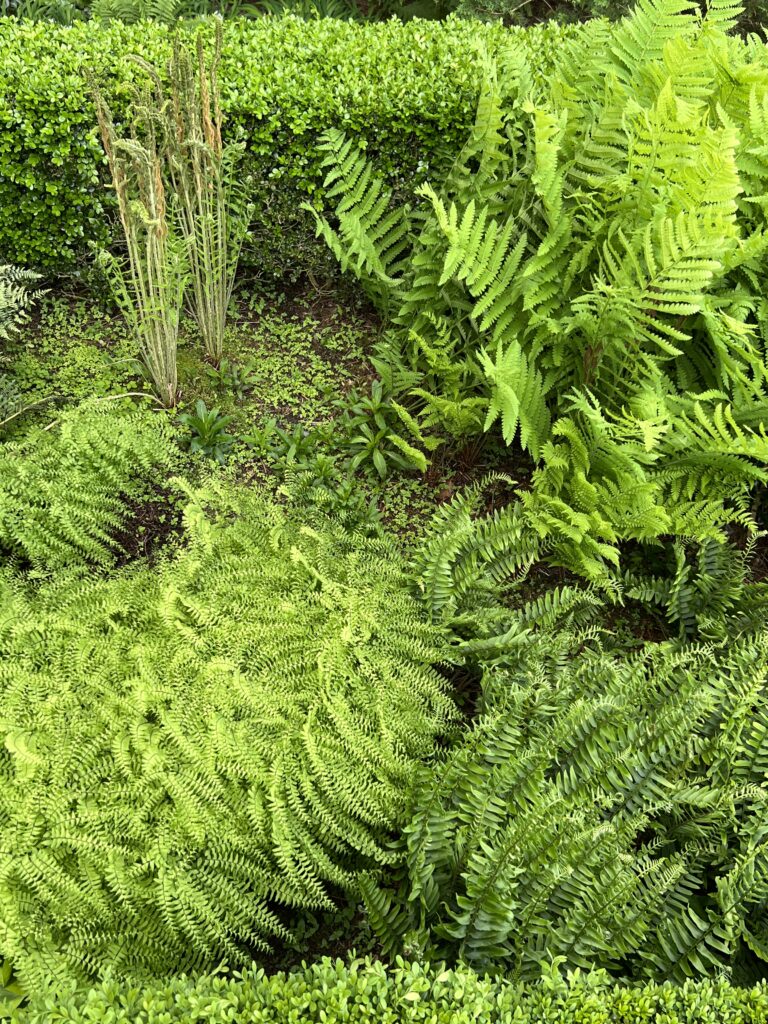

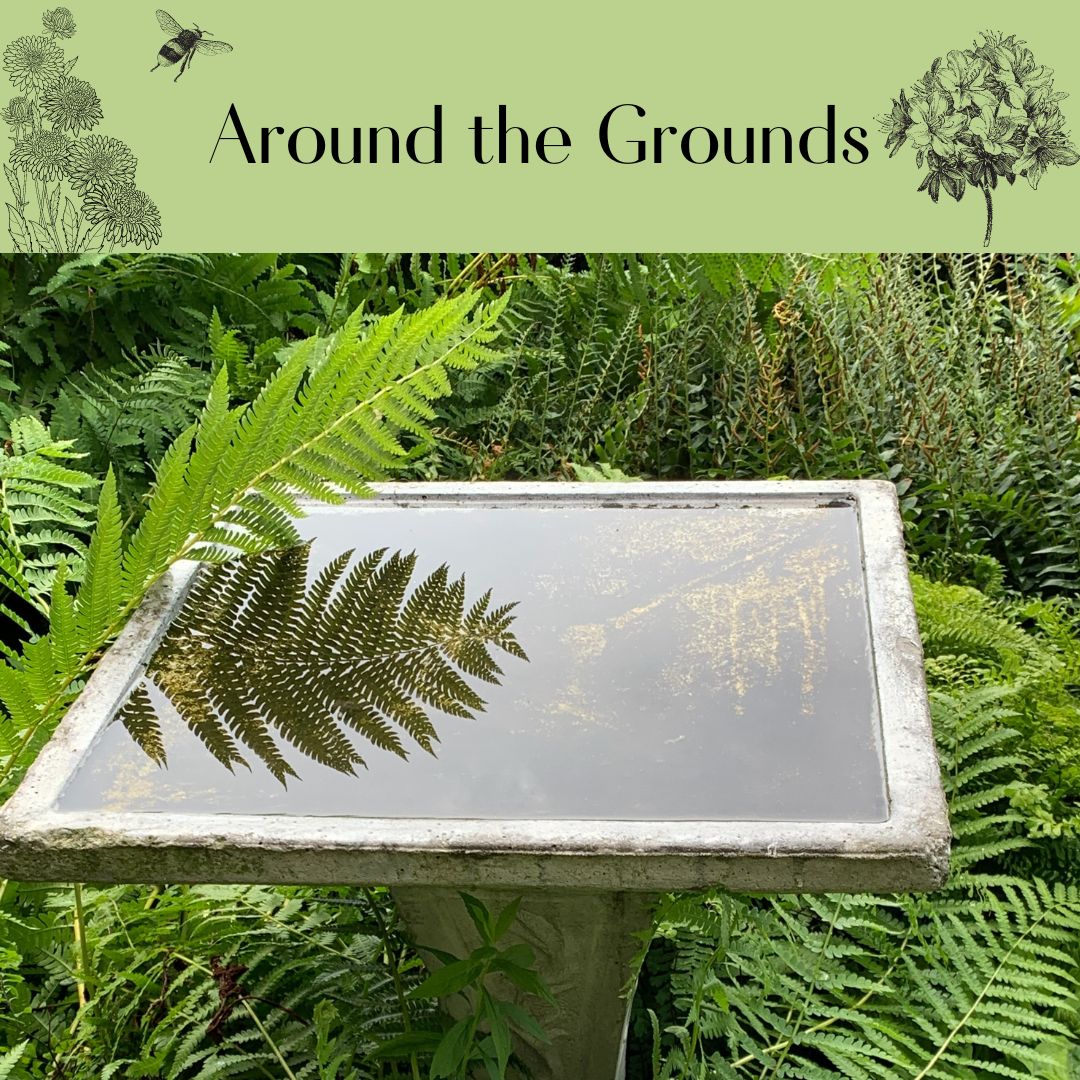
This is inspiring! Thank you!
Would any of these fern friends do well potted indoors? Or is that not the best environment for them? I have a good bit of shade in my house, so I’m wondering if I could take one in 🙂
Unfortunately, these are woodland creatures and not well-suited to confinement! Indoor air is pretty dry and these plants like moisture and soil enriched by fallen leaves. Boston ferns and several others seem to do well indoors, though!
Aha! I will have to check out Boston ferns, then!
Great article Cathy. I am looking forward to visiting greenburgh nature center as soon as I can. I bet it’s looking gorgeous now.
Thank you, Elaine. The meadow is coming along and the new pollinator garden looks great! We hope you’ll come by soon.
Another great blog. We are planting more ferns now in a perfect spot which is shady and where deer often cross into our yard. Perfect solution to the deer/woodchuck/rabbit problem. Thank you!